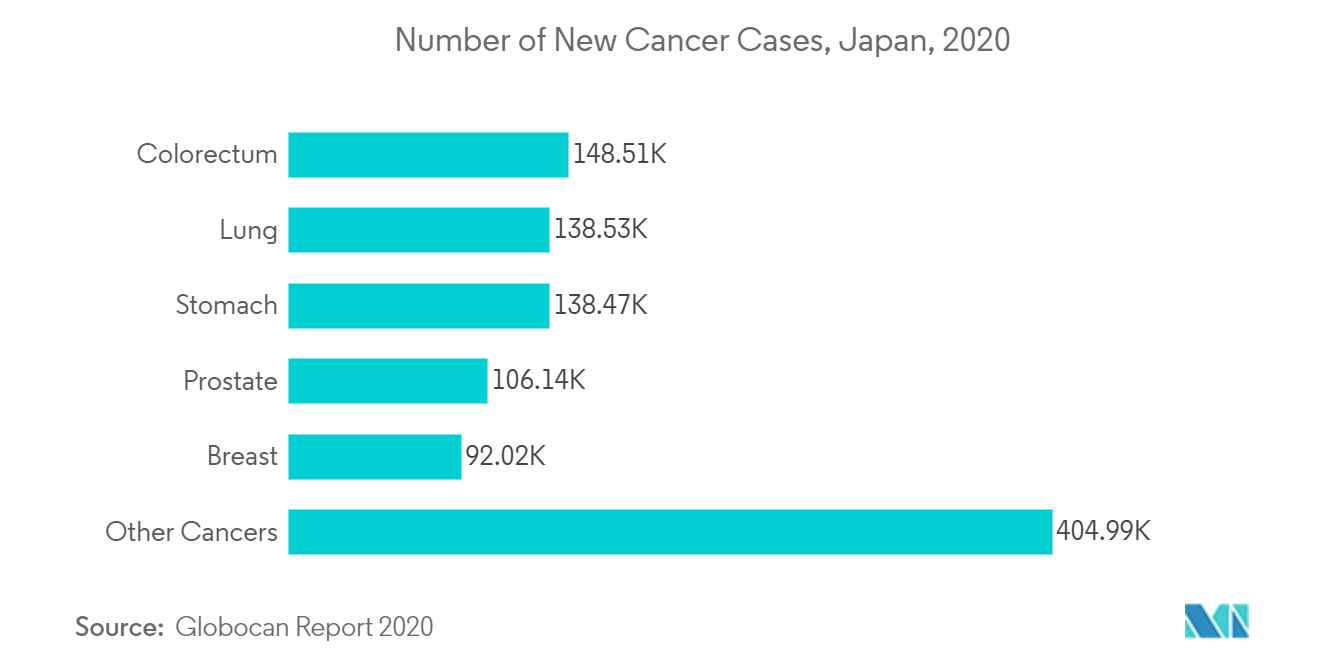Market Trends of Japan Magnetic Resonance Imaging Industry
This section covers the major market trends shaping the Japan Magnetic Resonance Imaging Market according to our research experts:
Oncology Segment is Expected to Witness Significant Growth in Future
Magnetic resonance imaging (MRI) is an imaging test that can be used for the detection of tumor/cancerous cells in the body and to look for signs that cancer may have metastasized (spread) from where it started to another part of the body. MRI system uses powerful magnets and radio waves to make detailed, computer-generated cross-section pictures of the body, which are later used by doctors in the diagnosis of cancerous cell/tissue.
Japan is one of the most technologically advanced countries in the Asia-Pacific region and has a robust healthcare system with a high burden of cancer, which is driving the growth of the studied segment of oncology in the country. For instance, according to the Globocan 2020 report, Japan reported 1,028,658 new cases of cancer in 2020, and the total number of five-year prevalent cases of cancer was 2,710,728. The major forms of cancer, which were majorly diagnosed in the country in both sexes were colorectum, lung, stomach, prostate, and breast cancer. Further, as per the above-mentioned source, it is projected that the cases of cancer will reach 1,110,549 by 2030, and 1,128,057 by 2040 in Japan, which will further increase the demand for MRI systems in the country and drive the growth of the oncology segment.
According to a research study published in June 2021, titled 'Interval Cancers after Negative Supplemental Screening Breast MRI Results in Women with a Personal History of Breast Cancer', the cancer detection rate was 8.3 per 1000 screening examinations, the interval cancer rate was 1.5 per 1000 screening examinations, and the multivariable analysis, interval cancers were associated with a first-degree family history of breast cancer, estrogen receptor- and progesterone receptor-negative primary cancers, and moderate or marked background parenchymal enhancement, which suggests the hereditary linkage of breast cancer, which might lead to a high number of breast cancer, propelling the segment toward growth.

